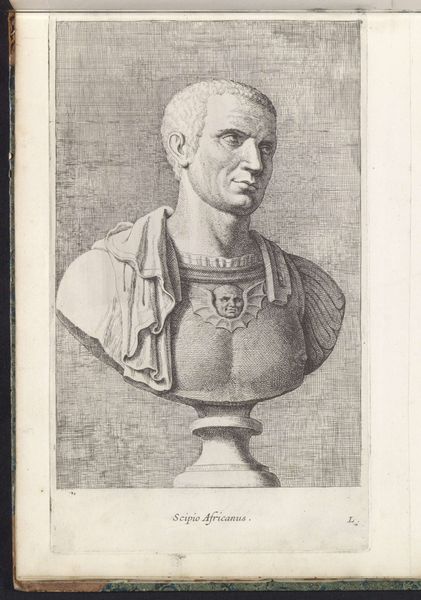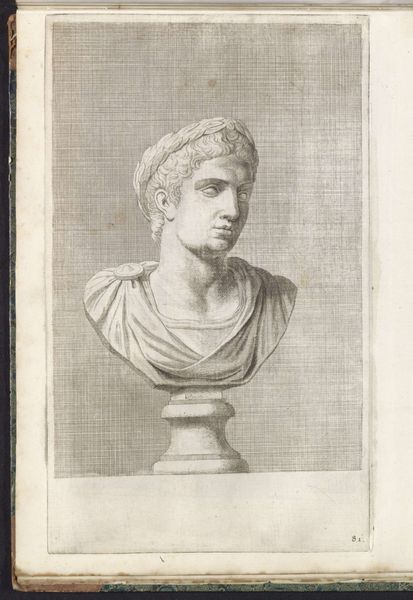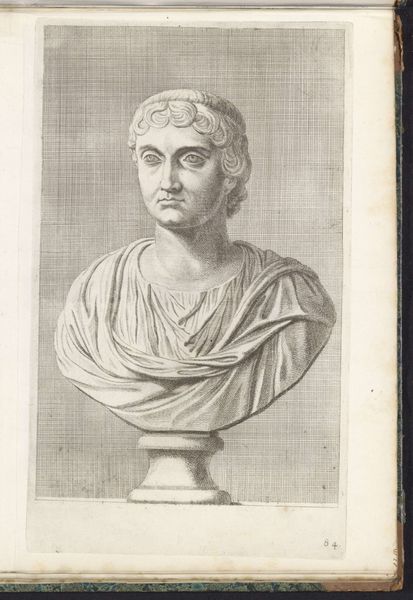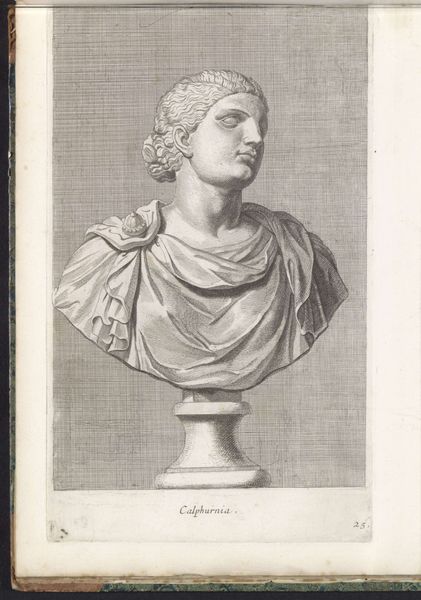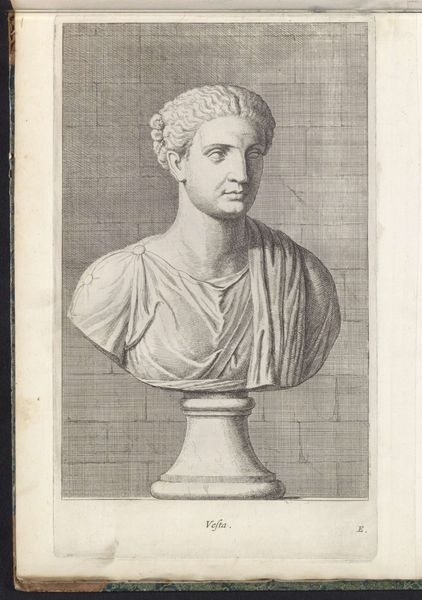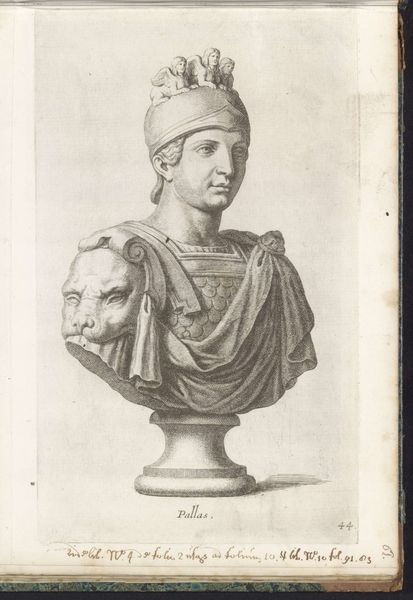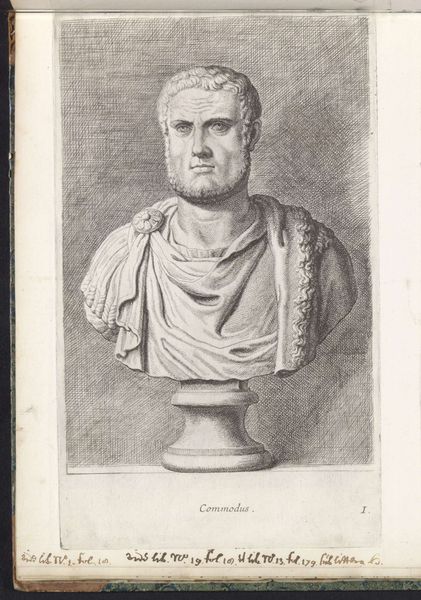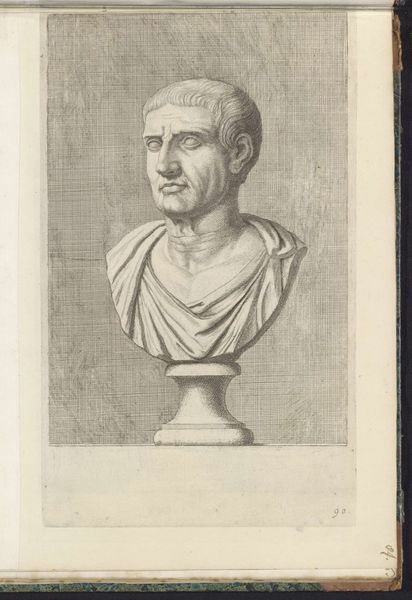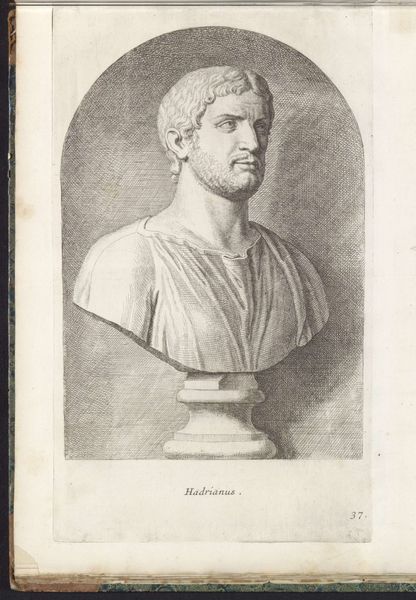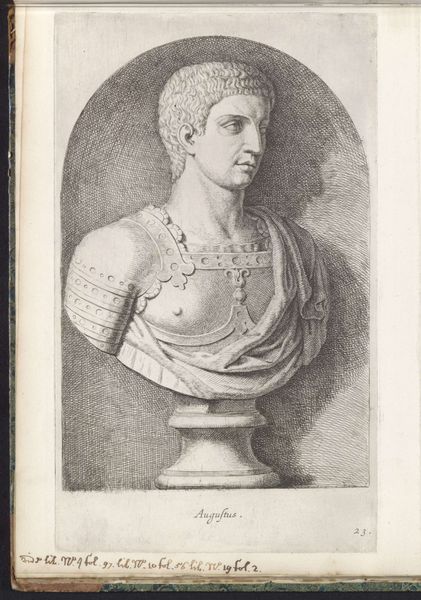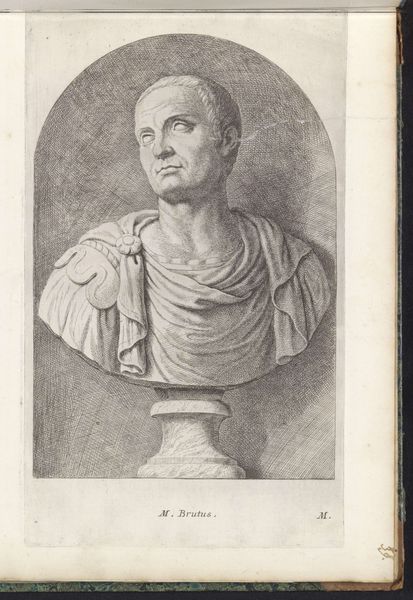
print, engraving
#
portrait
#
baroque
# print
#
figuration
#
form
#
classicism
#
ancient-mediterranean
#
line
#
history-painting
#
engraving
Dimensions: height 327 mm, width 200 mm
Copyright: Rijks Museum: Open Domain
Here we have Hubert Quellinus's engraving of a bust of Emperor Trajan, made in the 17th century. During this period, there was a widespread fascination with classical antiquity, which deeply influenced art and culture. Hubert Quellinus, who came from an artistic family in Antwerp, often depicted historical and mythological subjects. This engraving reflects the era’s interest in Roman emperors and their representation as symbols of power and virtue. Trajan, known for his military achievements and public works, was an ideal figure to emulate. The bust embodies the Roman ideals of leadership and strength, with its focus on the emperor's stern expression and classical features. Engravings like this played a crucial role in disseminating knowledge about classical art and history. They helped to shape perceptions of the past and were used to inform and inspire contemporary artists. The detailed rendering of the bust allows viewers to experience a sense of connection to the distant past. It presents a narrative of power and legacy, inviting us to reflect on the endurance and impact of historical figures.
Comments
No comments
Be the first to comment and join the conversation on the ultimate creative platform.

